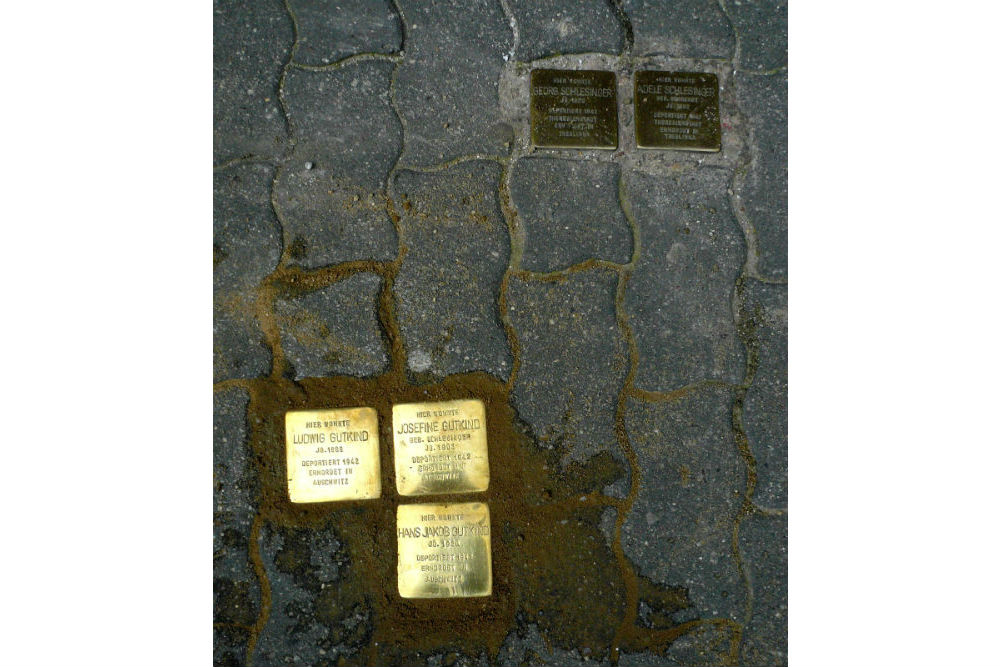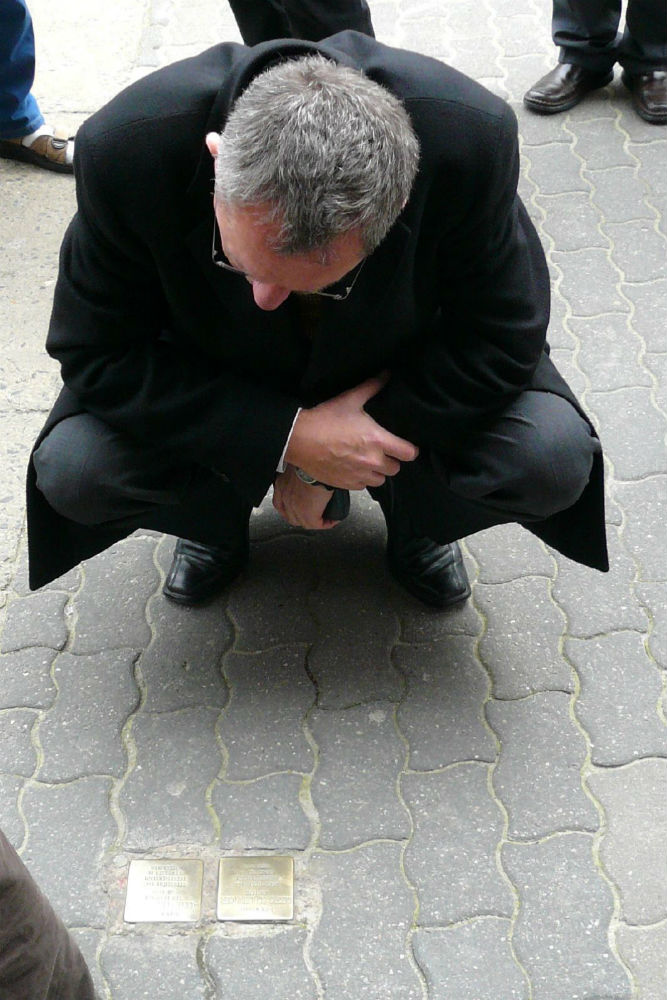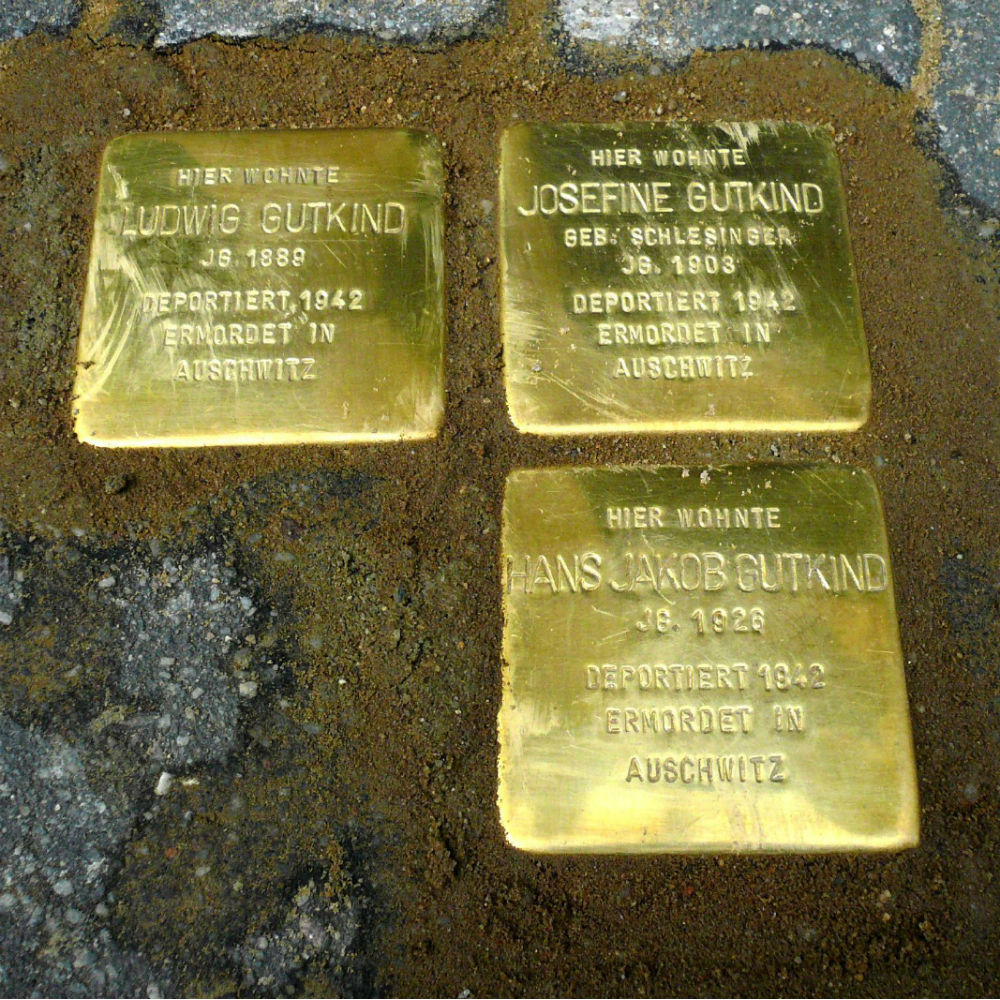Stumbling Stones Bahnhofstraße 51
These Stolpersteine (stumbling stones) commemorate:
* Georg Schlesinger, born 1870, deported 1942 Theresienstadt, murdered in Treblinka.
* Adele Schlesinger née Behrendt, born 1892, deported 1942 Theresienstadt, murdered in Treblinka.
* Ludwig Gutkind, born 1888, deported 1942, murdered in Auschwitz.
* Josefine Gutkind née Schlesinger, born 1903, deported 1942, murdered in Auschwitz.
* Hans Jakob Gutkind, born 1926, deported 1942, murdered in Auschwitz.
Georg apprenticed in textiles. In 1891 he joined his father’s business and married his first wife, Olga. In 1914/1915, they moved to Cottbus, where he established a furniture workshop at Bahnhofstraße 51. He was drafted into the military in 1917 and was later awarded an honorary cross. Olga died in 1924. Six years later, Schlesinger gave up his furniture business and became the commercial manager of the Cottbus synagogue community. He helped people who wanted to leave Germany.
1937 was a momentous year for Georg Schlesinger. He had to give up his Bahnhofstraße house and move to a "Judenhaus." He married Adele Behrendt. The Germans ordered him to develop a list of all Cottbus Jews.
That same year, his daughter Josefine Gutkind left Cottbus and moved to Berlin with her husband Ludwig Gutkind and their son Hans Jakob Gutkind. But they were not safe in the big city. In 1941 all three were forced into labor at various factories, including IG Farben, and were deported to Auschwitz in 1942.
In 1993, a street was named for Georg Schlesinger in the Sandow district of Cottbus. Stolpersteine for Georg and Adele Schlesinger were installed in 2006 and for the three Gutkinds in 2008.
"Stolpersteine" is an art project for Europe by Gunter Demnig to commemorate victims of National Socialism (Nazism). Stolpersteine (stumbling stones) are small, 10x10cm brass plaques placed in the pavement in front of the last voluntary residence of (mostly Jewish) victims who were murdered by the Nazis. Each plaque is engraved with the victim’s name, date of birth, and place (mostly a concentration camp) and date of death. By doing this, Gunter Demnig gives an individual memorial to each victim. One stone, one name, one person. He cites the Talmud: "A human being is forgotten only when his or her name is forgotten."
Do you have more information about this location? Inform us!
Source
- Text: Fedor de Vries & Anne Palmer
- Photos: wie-wolf
- Wikipedia: Georg Schlesinger
- Yad Vashem Central Database of Shoah Victims’ Names
- Stolpersteine.eu
Nearby
Point of interest
Monument
- Soviet War Memorial Cottbus - Cottbus
- War Memorial Kiekenbusch - Kiekenbusch (Cottbus)
- War Memorial Leuthen - Leuthen
Cemetery
- Mass Grave Soviet Soldiers Cottbus - Cottbus
- German War Graves Cottbus - Cottbus
- Mass Grave Polish Forced Laborers - Cottbus






